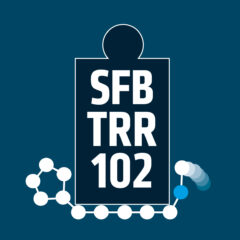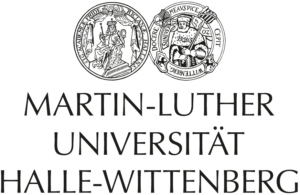Kinetics of Interface-Induced Polymer Crystallization
by Marthinus van Niekerk
and
Long chain Polyamides: Influence of methylene sequence length and external forces on structural features
by Rene Sattler
date: May 23, 2023
time: 14.30
location: seminar VDP 3 room 3.16 + zoom (hybrid seminar)
chair: Lucas
Long chain Polyamides: Influence of methylene sequence length and external forces on structural features
by Rene Sattler
Crystallographic studies towards the influence of methylene sequence length on a series of even-even polyamides PA 10.n (with n = 12, 14, 16 and 18) are performed. Such long-chain Polyamides (LCPAs) are an interesting class of materials since they can be produced by renewable resources and show a similar property profile like classical PAs (e.g., P4.6, PA6 or PA6.6) but with easier processability, lower water absorption and lower density. Temperature dependent X-ray diffraction measurements show that the triclinic α phase is the preferred phase at room temperature after slow cooling from melt. In PA10.12 and PA10.14 a reversible Brill transition to the (pseudo)hexagonal high temperature γ phase is observed. However, the Brill transition temperature TB is strongly dependent on the methylene sequence length and shifting to higher temperatures with increasing methylene sequence length. For the two higher members a Brill transition is absent. The analysis of annealed, uniaxial oriented fibers reveals that the crystalline state achieved under ambient conditions is influenced by external forces. This is due to relatively small energetic differences between the α and β polymorphs. All the uniaxial oriented PA 10.n samples show a β polymorph which is most prominent for PA10.12 and PA10.14. The higher members show a mixture of the β polymorph superimposed with a certain fraction of the α polymorph.
Kinetics of Interface-Induced Polymer Crystallization
by Marthinus van Niekerk
Initiation of crystallization at an interface by either heterogeneous nucleation or prefreezing presents kinetics of crystal formation surpassing that of homogeneous nucleation in the bulk. Prefreezing, which leads to a crystalline layer of well-defined thickness formed above the equilibrium melting temperature at the interface between a substrate and a polymer melt, has been studied extensively in our group for PCL and PE on both MoS2 and HOPG. [1] This has led to the phenomenological theory of first order prefreezing. Experiments with PCL on graphene have proven that prefreezing greatly enhances crystallization kinetics to the extent that supercooling of only a few degrees Celsius below the equilibrium melting point is required to crystallize the polymer material. [2] Heterogeneous nucleation, which lowers the thermodynamic energy barrier to nucleation w.r.t. homogeneous nucleation, also leads to decreased supercooling. [3] This phenomenon can be studied by non-isothermal droplet cooling experiments whereby a system of dewetted polymer droplets on a substrate is analyzed by in-situ polarized light optical microscopy. Samples are cooled at a well-defined rate from above the melting temperature while successive crystallization of droplets is analyzed. In particular, a comparison of PCL droplets on different substrates will lead to interesting conclusions regarding the effect of surface properties on the kinetics and mode of interface-induced crystallization. Research on polymer crystallization at interfaces is of a fundamental nature, but has consequences for the field of polymer processing.
[1] Tariq, M., Dolynchuk, O., Thurn-Albrecht, T.. J. Phys. Chem. C 2020, 124 (48), 26184-26192.
[2] Tariq, M.. Thermodynamics and Kinetics of Interface-Induced Crystallization. Martin-Luther-Universität Halle-Wittenberg, Dissertation, 2021.
[3] Tariq, M., Thurn-Albrecht, T., Dolynchuk, O.. Crystals 2021, 11 (8), 924.




